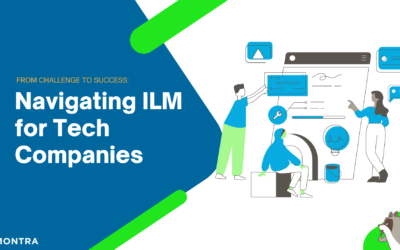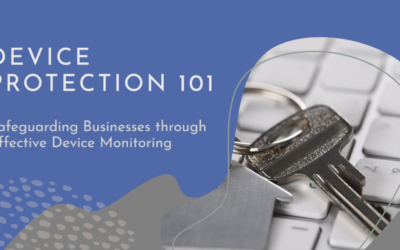IT Sprawl is a phenomenon that has risen significantly in small and mid-market businesses over the past several years. This growth can largely be attributed to two factors: rapid cloud services adoption and digital transformation initiatives. Across every industry, cloud services have spread like wildfire due to their ability to increase agility and cost-efficiency. Meanwhile, digital transformation projects have put technology in the middle of almost every business function. These combined factors have led to companies having to deal with some level of the hybrid technical environment.
It is well known that hybrid environments are great for small, growing businesses. Their “best of both worlds” approach to technology adoption allows IT to leverage cloud-based applications while keeping sensitive information on-premises. However, hybrid environments do come with their challenges as well. Over time applications and workflows are added by individual users or departments. This lack of centralization leads to IT teams having a sprawled environment that is difficult (if not impossible) to manage.
Struggling to keep up with the sprawl of hybrid technical infrastructures is nothing new to technology professionals. While the concerns are not new, figuring out how to effectively deal with these challenges is still a top priority for IT teams. According to the 2019 Solarwinds IT Trends Report, 48% of IT professionals plan to prioritize skill development of Hybrid IT Deployment Monitoring and Management within the next 3 to 5 years.
As your organization heads towards the final planning phases for 2020, now is the perfect time to consider if a sprawling IT infrastructure is hindering your business or IT Department. So, what can be done to help you get control over the sprawling technical infrastructure within your organization? Here are our tips:
6 Tips for Managing your Sprawling IT Infrastructure in 2020
Audit Your Environment More Often
The first step to getting your IT environment under control is to conduct a full audit of your systems and applications. Knowing what all is in your environment is the only way to understand how different IT components affect larger business processes. After all, how can you possibly fix a problem if you do not know it exists? Your audit should catalog every cloud service you are using, every server or VM, every network component, and every device. This process should lead to the creation of an inventory of all the technology used in your business and specifically what each component is used for. From this process you should be able to begin to understand:
- Which services and components are redundant?
- Which are not aligned with your business and technology strategy?
- Which are outdated or no longer supported?
- Which are lightly if ever used?
Prioritize Network Visibility Across the Sprawl
Maintaining network control in a modern, spread-out environment is significantly more complicated than on a local area network. One of the best ways to maintain a level of control over IT Sprawl is to have visibility throughout your entire network. Full network visibility will enable you to know what devices are on your network and what applications are being installed. We recommend partnering with a company, like Montra, who can integrate your various management platforms into a single, comprehensive solution that provides you with end-to-end visibility from a single platform.
Standardization leads to Better Hybrid Management
An easy way of minimizing the burden of sprawling IT management is to standardize the components within your environment. Use as few server, computer, router, VM, etc. types as possible. Once these various types have been decided, consolidate your IT environment to eliminate as many of the others as possible. This will lead to decreased maintenance as IT has fewer components to manage. In the long run, IT employees will achieve additional efficiencies as they become specialists in keeping only a specific number of types of IT components running at their best.
Establish Policies for Deploying New Cloud Applications
It is unlikely an employee will stroll into work with their own server. However, the same cannot be said for cloud and other web-based applications. All too often a cloud-based application enters a company’s environment at the request of a single employee. These services undergo little-to-no vetting and are often duplicated or redundant to applications already in use. An easy way to combat this is to enforce authorization procedures for the selection and implementation of new technologies. These procedures should align to the company’s larger strategic goals and make sure applications fit the “bigger picture.” When properly enforced, these procedures should reduce new or duplicate applications from entering the environment.
Consider Full Lifecycle Cost of New Products
It’s common for businesses to find cheaper technical solutions more appealing than slightly more expensive, yet more efficient, counterparts. However, cheaper solutions can come at their own cost. Choosing cheaper equipment can affect maintenance, power efficiency, and management costs which are not considered in the initial investment. Maintaining these various inefficiencies only gets more complicated as infrastructure grows. When expanding IT components on your network make sure you consider the full lifecycle cost of each product and not just the upfront cost.
Be Cautious of “Jack of all Trades” Hiring
You probably have great experts on your team. However, experts in managing servers may not be able to provide the best insight consolidating your cloud. Modern hybrid business infrastructures are composed of a wide range of technologies and systems. This makes it very difficult to find a generalist that can properly support a mid-sized IT infrastructure. Often times the best result comes from bringing in an outside team of experts. These team members can often better serve as your internal IT team by providing deeper expertise in particular IT specialties. Bringing in additional resources increases the level of specialization of each component within your network. Additionally, an outside team provides you with an “outsiders perspective” that is often helpful in determining the actual validity of a specific service or component even if it is associated with a specific, high-maintenance user.
If you are interested in learning more about managing your sprawling IT infrastructure, contact our experts today.



